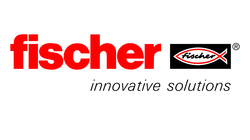Chemical anchors need to be specified and installed correctly
| Chemical anchors need to be specified and installed correctly_approved | 31 KB | Download | |
| Different chemical anchors are available in various categories. | 1.21 MB | Download | |
| Specifying the correct chemical anchor for a specific application is critical. | 343.32 KB | Download | |
| Upat fischer Technical Manager Kevin Owen. | 3.76 MB | Download |
Available in South Africa exclusively from leading distributor Upat, fischer anchoring systems represent the epitome of German engineering and innovation. However, specifying the correct product is essential for the ultimate effectiveness of the technology, Upat fischer Technical Manager Kevin Owen notes.
Highlighting an international example of incorrect specification, Owen points to the Central Artery/Tunnel Project, commonly known as the ‘Boston Big Dig’ project. This was a megaproject in Boston in the US that rerouted the Central Artery of Interstate 93, the chief highway through the heart of the city, into the 5.6 km Thomas P. O’Neill Jr. Tunnel.
The project had a suspended precast ceiling containing all of the services, including air-conditioning, ventilation, electricity, and fire suppression and prevention systems. The collapse of the ceiling structure began with the simultaneous creep-type failure of several anchors embedded in epoxy in the tunnel’s roof slab.
Each of the panel’s intersecting connection points consisted of several individual bolts anchored into the roof slab. The failure of a group of anchors set off a chain reaction that resulted in adjacent connection groups creeping and then failing, dropping 24 000 kg of concrete onto the roadway below, and resulting in one fatality.
The cost of this anchor failure in terms of repairing the damage, and the subsequent litigation to resolve the liability issue, was about $400 million – a stark warning about the hidden costs of specifying the incorrect product.
Meanwhile, in South Africa several years ago, the Midvaal Water Company upgraded a water-treatment plant in Orkney in North West Province to increase the quantity of water that could be processed by raising the height of the launder channels.
Additional tie beams were added to strengthen the channels, placed into the concrete using the correct selection of chemical anchors. However, polyester was used as the fixing agent, which loses bonding strength with continual exposure to moisture.
It appears that the tie beams were shorter than the critical dimension required, which was at least 60 mm of grout packing on either side. This reduced the effective depth of the anchors. “It is essential to ensure that the minimum anchorage depth is attained,” Owen stresses.
It was also determined that non-waterproof anchors had been used that were only suitable for use in door applications, emphasising not only the importance of specifying the correct product for the correct application, but also the proper installation.
“These are relatively specialised products, with different types of chemical anchors available in various categories. Therefore it is vital that building contractors and consulting engineers are better educated about product specification and proper installation requirements,” Owen comments.
For example, simplifying a chemical anchor, without reference to the specific type, invariably results in the incorrect product being applied – which can have a substantial impact on the bottom line in terms of the remedial work required, not to mention the health and safety implications for workers on-site.
Ends
Notes to the Editor
To download hi-res images for this release, please visit http://media.ngage.co.za and click the Upat link to view the company’s press office.
About Upat
Upat SA (Pty) Ltd., a 100% South African owned business, began trading in 1983 as the sole Southern African distributor of the Upat range of construction fasteners (anchor bolts, chemical anchors, nylon plugs, etc.) From the outset, Upat was committed to the building industry, supplying not only a range of anchor bolts, but also rotary hammer drilling machines, tungsten-tipped masonry drill bits, power actuated tools, and allied building and construction products. The aim was to supply a range of top-quality products at market-related prices. This philosophy resulted in Upat becoming a market leader market leader in Southern Africa within a decade.
Media Contact
Jonathan Ducie
NGAGE Public Relations
Phone: (011) 867 7763
Fax: 086 512 3352
Cell: 084 709 0167
Email: jonathan [at] ngage [dot] co [dot] za
Web: www.ngage.co.za
Browse the NGAGE Media Zone for more client press releases and photographs at http://media.ngage.co.za

